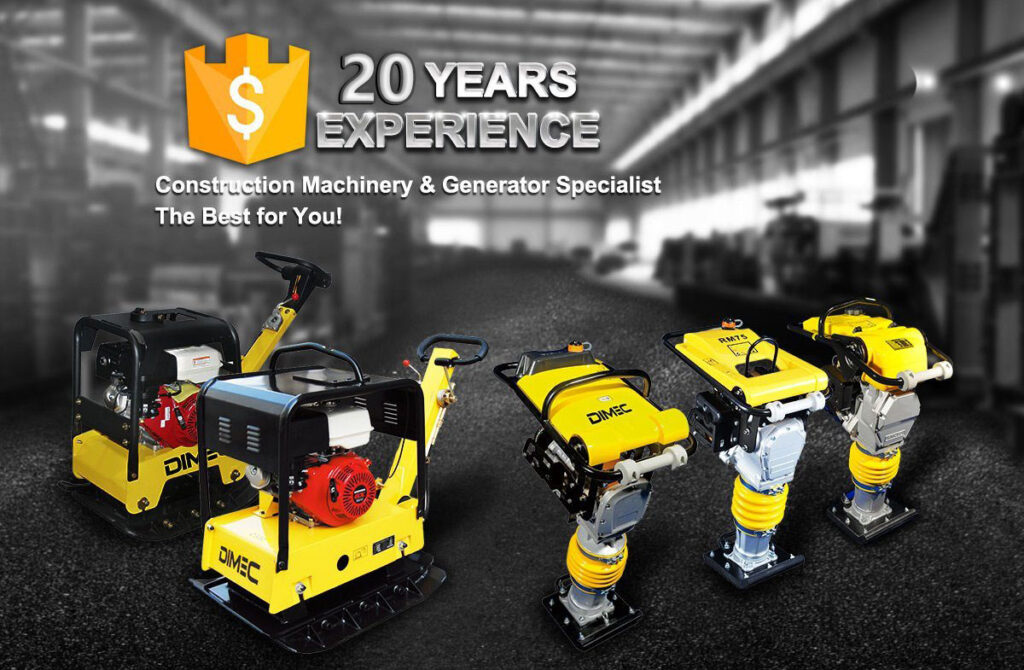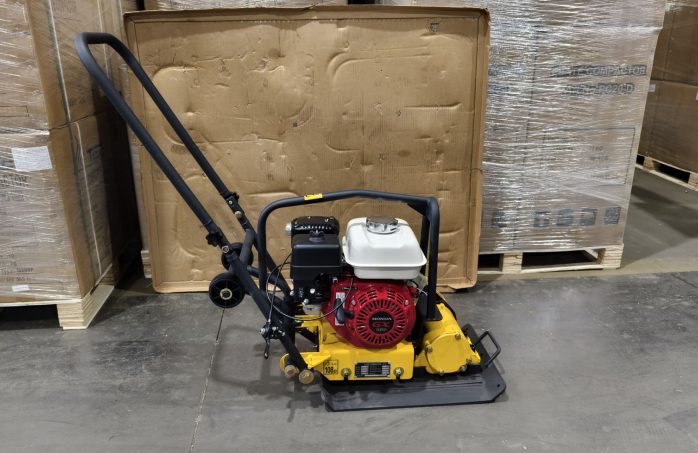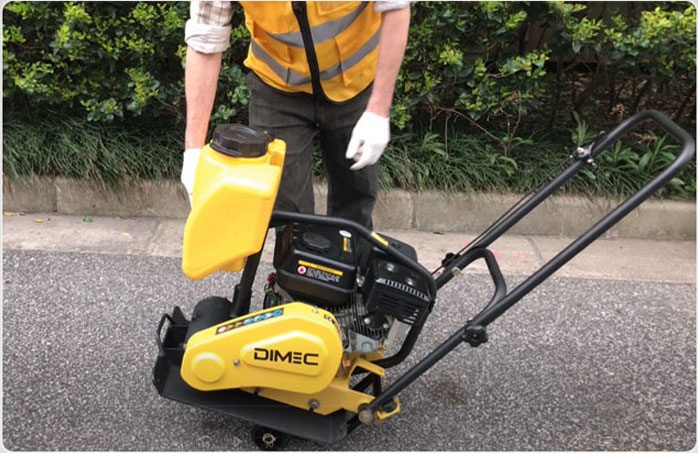Compactor Plate PME-C60 vs Compactor Machine PME-C60T: A Definitive Guide to the Right Choice
- DIMEC
- Compactor Machine, Compactor Plate
Home » Compactor Plate PME-C60 vs Compactor Machine PME-C60T: A Definitive Guide to the Right Choice

Table of Contents
Introduction
For contractors and construction professionals, choosing between the Compactor Plate PME-C60 and Compactor Machine PME-C60T plate compactors hinges on one critical feature: the integrated Water Tank (T). While both machines excel in soil compaction, their design philosophies cater to distinct project requirements. This article breaks down their differences through real-world scenarios, technical innovations, and niche applications, ensuring you select the right tool for your job—whether it’s a dusty urban roadworks project or a precision-focused landscaping task.
Technical Specification
| Model | Compactor Plate PME-C60 |
|---|---|
| Engine | Honda / Robin / Loncin / Diesel engine |
| Engine type | Air-cooled, single cylinder, 4-stroke, petrol engine / diesel engine |
| Frequency [VPM] | 5600 |
| Centrifugal force [KN] | 12 |
| Plate size (LxW) [cm] | 50x36 |
| Max.compaction depth[cm] | 28 |
| Travel speed [m/min] | 25 |
| Max.inclination angle | 20° |
| N.W./G.W. [kg] | 65/70 |
| Package (LxWxH) [cm] | 75x38x56 |
| Model | Compactor Machine PME-C60T |
|---|---|
| Engine | Honda / Robin / Loncin / Diesel engine |
| Engine type | Air-cooled, single cylinder, 4-stroke, petrol engine / diesel engine |
| Frequency [VPM] | 5600 |
| Centrifugal force [KN] | 12 |
| Plate size (LxW) [cm] | 50x36 |
| Max.compaction depth[cm] | 28 |
| Travel speed [m/min] | 25 |
| Max.inclination angle | 20° |
| N.W./G.W. [kg] | 68/73 |
| Package (LxWxH) [cm] | 75x38x61 |
Key Feature Spotlight: The Water Tank Advantage
Why the “T” Matters
The PME-C60T’s water tank isn’t just an add-on—it’s a game-changer for:
- Dust Suppression: Critical for urban projects near schools, hospitals, or residential areas.
- Soil Optimization: Moistening dry soils improves compaction density, especially in arid climates.
- Regulatory Compliance: Meets environmental standards for airborne particulate control.
Example: In a recent highway expansion project in Dubai, the PME-C60T reduced dust emissions by 62% compared to dry compaction methods, speeding up approvals and minimizing community disruption.
Head-to-Head Comparison: Beyond Basic Specs
1. Project Scale & Environmental Demands
| PME-C60 | PME-C60T |
|---|---|
| Ideal for medium-scale projects: parking lots, rural road repairs. | Built for large-scale, dust-sensitive sites: urban roadworks, industrial zones. |
| Lacks water tank; best for cohesive soils or humid climates. | Water tank enables compaction in dry, loose soils (e.g., sandy or gravelly substrates). |
Case Study: A contractor in Arizona used the PME-C60T to compact desert soil for a solar farm access road. The water tank allowed uniform compaction despite extreme dryness, avoiding costly material settling post-construction.
2. Technical Upgrades in the C60T
- Dual-Function Spray System: Adjustable nozzles for fine mist (dust control) or targeted water flow (soil conditioning).
- Enhanced Engine Cooling: Larger radiator to handle prolonged water tank use in high-temperature environments.
- Ergonomic Water Tank Access: Side-mounted tank with quick-release valves for easy refills without stopping work.
3. Cost-Benefit Analysis
| Factor | PME-C60 | PME-C60T |
|---|---|---|
| Initial Cost | — | +15-20% for tank |
| Operational Savings | — | Reduces dust-related delays; cuts water truck dependency by 70%. |
| ROI Timeline | 6-12 months (typical small projects) | 3-6 months (large projects with strict environmental rules). |
Unique Applications Where Each Shines
PME-C60: The Precision Workhorse
- Best For:
- Landscaping: Compact garden paths without damaging adjacent plants.
- Rural Road Maintenance: Stable performance in cohesive clay soils.
- User Insight: A landscaping company in Texas reported 30% faster turnaround on residential projects using the C60’s maneuverability in tight backyard spaces.
PME-C60T: The Urban Compliance Expert
- Best For:
- City Infrastructure: Road repairs near schools or hospitals with zero dust tolerance.
- Mining Access Roads: Control silica dust in arid regions.
- Regulatory Edge: Complies with OSHA (US) and EU Directive 2008/50/EC airborne particulate limits.
Operator Insights: What Users Say
- PME-C60 Feedback: “Perfect for our rural road projects—durable and no unnecessary features.” – John, Road Contractor, Canada
- PME-C60T Feedback: “The water tank saved us $5K/month on third-party dust control services.” – Maria, Construction Manager, Australia
FAQs: Addressing Niche Concerns
Q1: Can I retrofit a water tank to the standard C60?
No. The C60T’s frame and engine cooling are redesigned to support the tank’s weight and prolonged use.
Q2: Does the C60T’s tank affect compaction force?
No. The 12 KN centrifugal force remains unchanged; the tank adds functionality without compromising power.
Q3: Which machine is better for winter projects?
The C60: Water tanks can freeze in sub-zero temperatures, making the C60T less practical in cold climates.
Conclusion: Match the Machine to Your Mission
- Choose PME-C60 if you prioritize simplicity, cost-efficiency, and work in stable soil conditions.
- Choose PME-C60T if dust control, regulatory compliance, or dry soil challenges define your projects.
By focusing on the Water Tank’s transformative role—rather than generic comparisons—this guide highlights actionable differences, ensuring your choice aligns with real-world demands, not just specs.
Plate Compactor X Tamping Rammer X Road Roller
You May Also Like
Plate Compactors: An In-Depth Analysis of Functionality, Applications, and Selection Considerations
Comprehensive Guide to Road Roller Manufacturers
Are Diesel Generators More Reliable Than Gasoline Generators?
What is a Compaction Rammer and How Does It Work?
Single Wheel Roller: The Essential Guide for Efficient Compaction
Tamping Rammer vs. Hand Compaction: Which is More Effective?
Preferred Brands of Engineering Compaction Equipment
Three Core Product Lines for Efficient Construction

Full Range of Plate Compactor Solutions (40KG - 750KG)
We offer 8 plate compactors for light to heavy - duty work. Modular design suits various scenarios, and patented shock - absorption boosts comfort by 30%.

High - efficiency Tamping Rammer Series (32KG - 90KG)
Nine impact rammers with Honda/Robin/Loncin power. Advantages: 15% less energy use, 2x longer - lasting alloy head, 50% less fatigue. Ideal for complex jobs like trench backfilling.

Intelligent Road Roller Machinery Cluster (0.3T - 5.5T)
A 12 - model all - terrain matrix. Features multi - gear amplitude, foldable cockpit (40% better passability in narrow areas), and real - time compaction monitoring. Caters to all road - building stages.

